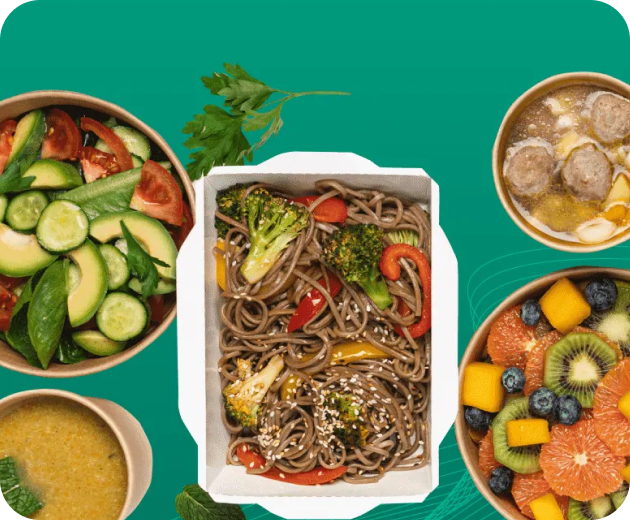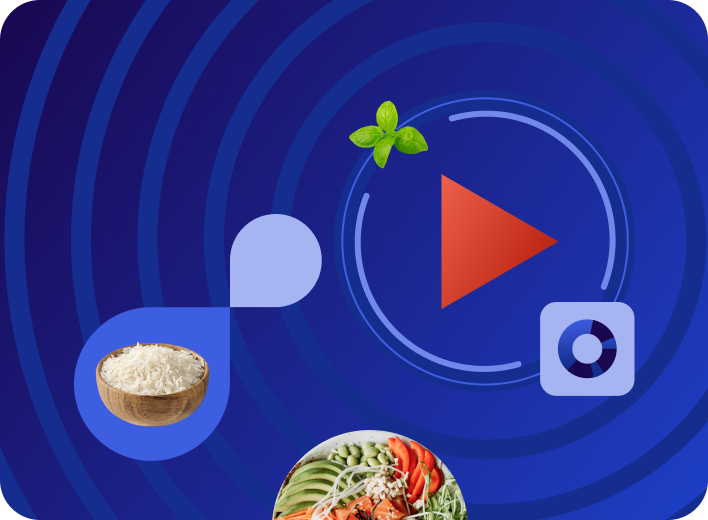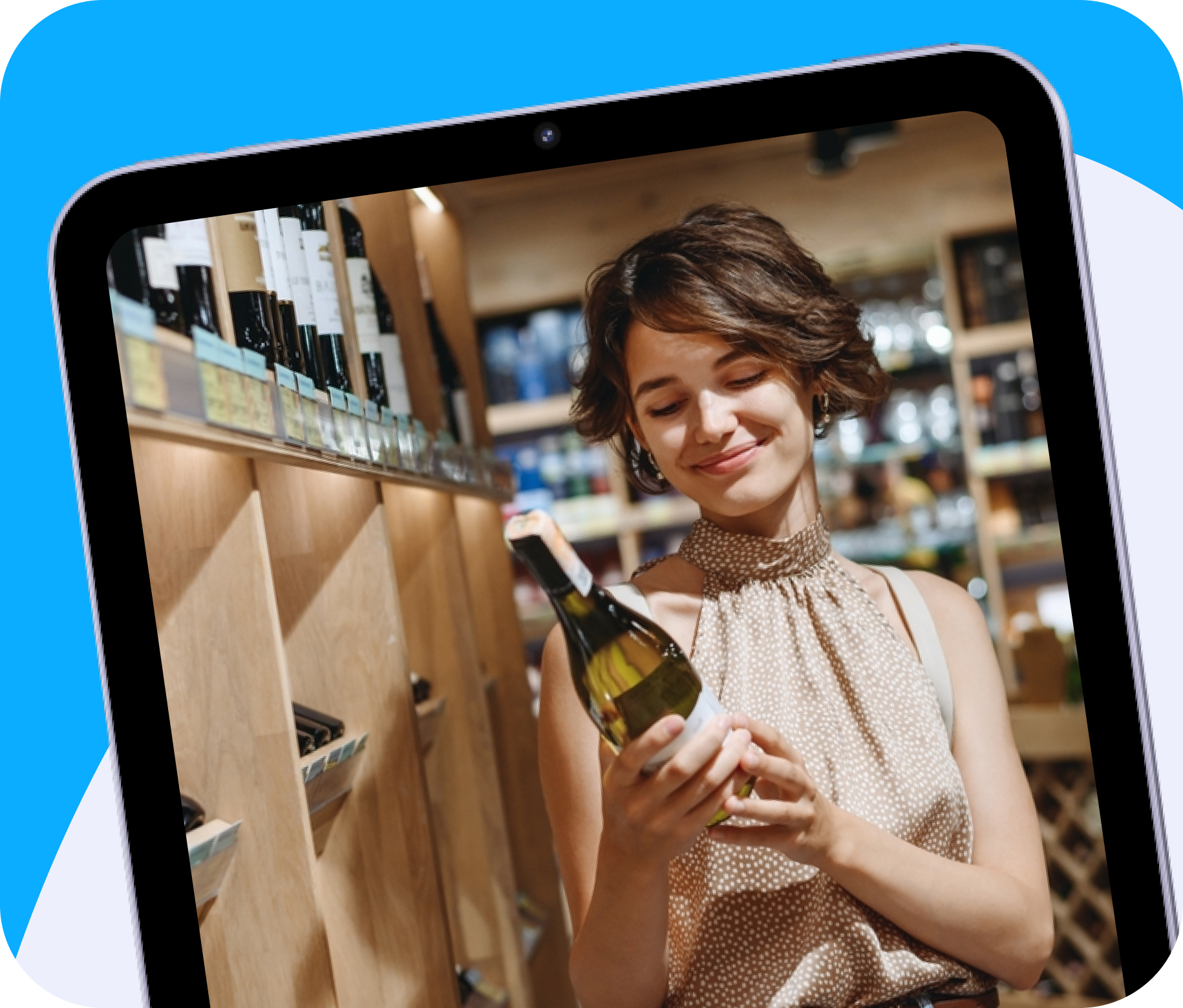The Top 8 CPG Industry Trends for 2025 and Beyond
The CPG industry trends are constantly evolving, driven by changing consumer preferences, technological advancements, and global economic conditions.
Plant-based food sales are booming, and are expected to reach $25.4 billion by 2027.
This is just one example of how the CPG landscape is evolving, and businesses that adapt will thrive.
This article will explore the top 8 CPG industry trends, giving businesses an insight into what to expect and how they can adapt.
Key Trends in the CPG Industry
The CPG industry is brimming with trends that hold significant implications for CPG marketing strategies.
Here are some of the most noteworthy developments:
1. The Rise of Plant-Based Alternatives
One of the biggest changes we’ve seen in recent years is the rise of plant-based food trends.
With more people thinking about health, sustainability, and ethical eating, the demand for plant-based alternatives has exploded.
Things like plant-based meat, dairy-free milk, and vegan snacks aren’t just niche anymore—they’re now everyday staples.
Brands are stepping up by creating tasty, high-quality, and nutrient-packed options to win over these mindful consumers.
By jumping on this trend, businesses can reach a fast-growing market while connecting with values that really matter to today’s buyers.
2. Direct-to-consumer (DTC) boom
One main trend in the CPG industry trends is the transformative impact of Direct-to-Consumer (DTC) brands.
These brands are reshaping the retail landscape by sidestepping conventional retail avenues to sell directly to consumers via online platforms.
This forward-thinking strategy grants these brands enhanced control over their brand image, the ability to provide personalized shopping experiences, and a more direct line of engagement with their customers.
3. Omnichannel shopping
Omnichannel shopping is changing the way consumers connect with CPG brands.
Today’s shoppers want a seamless experience that moves easily between online and in-store interactions, which means brands need strategies that bring the digital and physical shopping worlds together.
CPG shopper marketing is key to making this happen, helping brands deliver consistent messaging and personalized experiences across every platform.
By using data insights and coordinating efforts across e-commerce, social media, and physical stores, brands can better meet the needs of today’s omnichannel shoppers.
This not only makes shopping more convenient but also builds stronger brand loyalty by catering to the variety of preferences modern consumers have.
4. Transparency and sustainability
Now more than ever, consumers show a keen interest in understanding the origin and composition of their food products.
They gravitate towards brands that not only offer transparency through clear labeling but also commit to ethical sourcing and sustainability practices.
This shift highlights the growing importance of CPG sustainability, as it becomes a critical factor influencing consumer choices and preferences.
5. Personalized nutrition
Driven by fast advancements in technology and significant improvements in data analytics, personalized nutrition is gaining popularity among health-conscious consumers.
CPG companies lead this trend, using detailed data and advanced algorithms to create products that match individual dietary needs and preferences.
This strategy enables a more personalized eating experience and promotes better health outcomes by meeting each consumer’s specific nutritional requirements.
6. Functional foods and beverages
The rise of functional food trends shows how more people are looking for products that go beyond basic nutrition to offer specific health benefits.
Functional foods and drinks are packed with ingredients like probiotics, vitamins, or adaptogens to help with things like better digestion, stronger immunity, or more energy.
This trend highlights a growing interest in preventive health and personalized wellness.
CPG companies are jumping on board by creating innovative products that combine convenience with science-backed benefits, appealing to a wide range of health-conscious consumers.
7. Keeping up with adaptogens
Adaptogens are natural ingredients believed to help the body adapt to stress.
They are being incorporated into a wide range of CPG products, from beverages to powders, catering to consumers seeking natural solutions for managing stress and anxiety.
These ingredients have been used in traditional medicine for centuries and are now gaining popularity in the wellness world.
8. Trending CPG Food
The last CPG industry trend we will discuss is the rise of CPG food trends in the US.
With the increasing focus on health and wellness, consumers are gravitating towards healthier food options in their grocery shopping.
CPG companies are responding to this demand by offering a variety of healthy and convenient food products that cater to different dietary preferences such as plant-based, gluten-free, and keto-friendly options.
One of the main drivers for this trend is the growing awareness about the impact of diet on overall health.
Consumers are actively seeking out products with cleaner labels, free from artificial ingredients and preservatives.
They are also looking for functional foods that provide additional benefits such as boosting immunity or improving gut health.
The Challenges Behind Utilizing CPG Industry Trends
While these trends present exciting opportunities, CPG companies face challenges in leveraging them effectively:
- Data Overload: The abundance of consumer data can be overwhelming. Companies need sophisticated analytics tools like those found on the Tastewise platform to interpret data and derive actionable insights.
- Rapidly Evolving Trends: Keeping pace with the ever-changing consumer landscape can be difficult. CPG companies need to be agile and adaptable to stay ahead of the curve.
- Omnichannel Integration: Creating a seamless omnichannel experience requires significant investment in technology and infrastructure.
- Personalization at Scale: Personalization efforts can be resource-intensive, and scaling them to reach a diverse consumer base efficiently is a challenge.
- Sustainability Concerns: Balancing consumer demand for affordability with sustainable practices can be complex. Sourcing ethically and implementing eco-friendly packaging solutions might come at a higher cost.
What is the Future Trend in the CPG Industry?
Looking beyond 2026, we can expect the CPG industry to continue its trajectory toward personalization, data-driven decision-making, and a strong focus on health and wellness.
Technological advancements like artificial intelligence and machine learning will play an increasingly significant role in developing targeted marketing strategies and creating personalized consumer experiences.
Additionally, the emphasis on sustainability is likely to intensify, with consumers demanding even greater transparency and eco-friendly practices from CPG companies.
FAQs
AI is being used in various ways to personalize the CPG experience.
For instance, AI algorithms can analyze purchase history and browsing behavior to recommend products and recipes to individual consumers.
Additionally, AI-powered chatbots can provide personalized customer service and answer product-related queries in real time.
Inflation is putting pressure on household budgets, causing consumers to be more price-conscious.
We can expect to see a rise in private-label brands and discount retailers as consumers seek value for money.
Additionally, CPG companies may look for ways to optimize packaging and reduce product size to maintain affordability without compromising quality.
The popularity of ethnic cuisines is on the rise, driven by globalization and increased cultural exchange.
CPG companies are responding by expanding their product offerings to include ingredients and flavors from diverse culinary traditions.
We can also expect to see more innovation in ethnic convenience foods that cater to busy lifestyles.
Food waste is a significant global problem. CPG companies are leveraging technology to develop solutions that extend shelf life, improve supply chain efficiency, and connect consumers with surplus food.
This could involve the use of smart packaging that monitors freshness or partnerships with food rescue apps to redistribute nearing-expiry items.
Lab-grown meat, also known as cultivated meat, is a nascent technology with the potential to revolutionize the food industry.
While still in its early stages, CPG companies are exploring partnerships with lab-grown meat producers to bring these products to market.
This trend could significantly impact the future of protein consumption within the CPG landscape.
Stay Ahead of the Curve With Tastewise
The CPG industry is a dynamic and ever-evolving landscape. Ignoring trends can leave companies behind.
Here at Tastewise, we are a leading provider of food intelligence, offering CPG marketers the tools and insights they need to make data-driven decisions and capitalize on emerging trends.
Our platform provides comprehensive consumer and market research, helping brands understand what consumers are buying, eating, and wanting.
Don’t be blindsided by the changing market – stay ahead of the curve with Tastewise as your trusted partner in navigating the exciting future of CPG.




